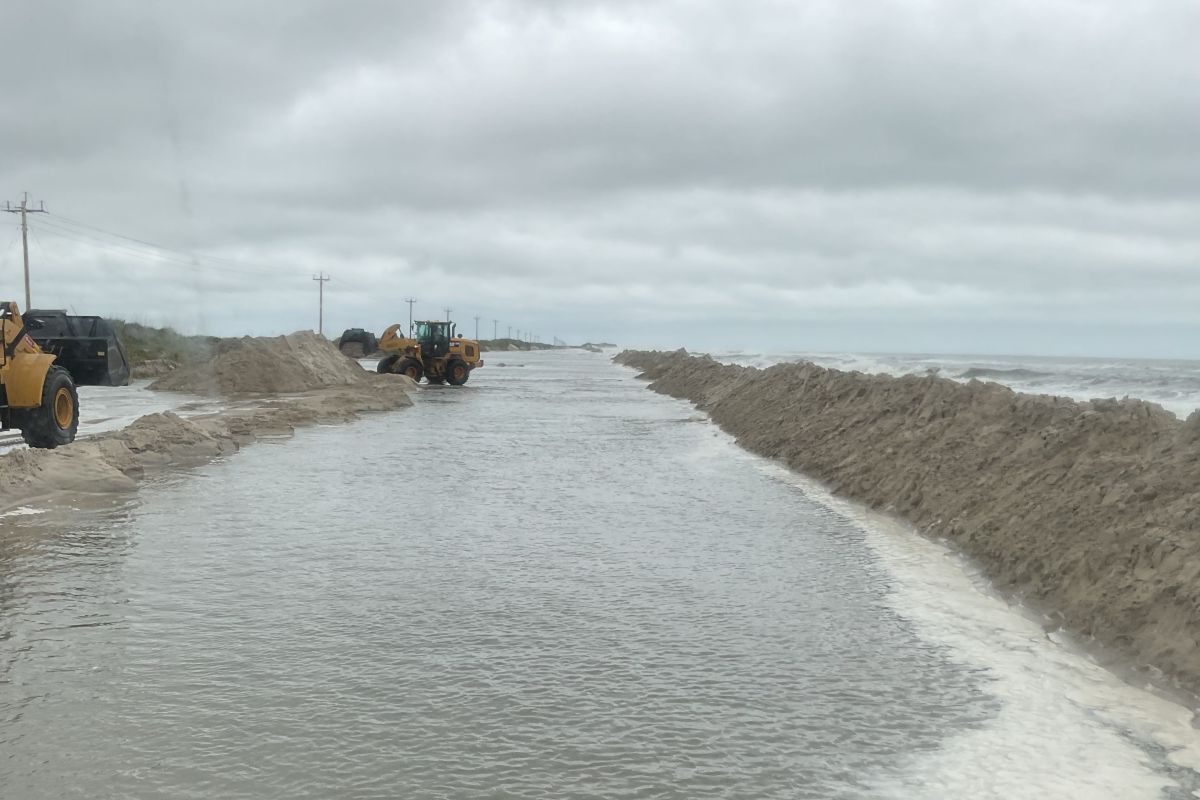Reprinted from the Outer Banks Voice
Portuguese Man-of-WarPhysalia physalis Supporter SpotlightWhat Is It? The Portuguese man-of-war is spectacular to behold. While it may look something like a jellyfish, with its conspicuous float and trailing tentacles, the man-of-war is not a true jellyfish. Neither is it one animal, but a colony of numerous organisms called polyps or zooids that are so specialized that they cannot live without each other. Where Is It Found? Man-of-wars can be found floating on the surface of the ocean in warm tropical and subtropical areas around the world. In the United States they can occur in coastal waters from Florida around to Texas. However, they can drift farther up the Atlantic coast on warm currents, or when pushed by storms. What Does It Do? Supporter SpotlightThe man-of-war is adapted to live its life entirely in the open ocean. Aided by the large float, it drifts along on the surface, blown by winds and carried by currents. Sea turtles, some fish and also crabs will feed on the man-of-war. What Does It Eat? As the colony drifts, the man-of-war is constantly “fishing” for food with its tentacles. The food is trapped in the tentacles , called dactylozooids, with the aid of specialized stinging capsules called nematocysts that cover much of the surface area. Nematocysts are tightly packed with tiny, coiled, stinging barbs that shoot out whenever the cells are disturbed. Small fish, crustaceans and plankton are paralyzed by these stinging cells, which contain a powerful neurotoxin. Once it’s paralyzed, the food is drawn up to the mouths — yes, it has more than one – by feeding tentacles, called gastrozooids. Is It Dangerous to Humans? The man-of-war does not actively attack people and is commonly out in open ocean water, far away from most humans. However, they can sometimes be found in relatively shallow coastal waters. If you come into contact with one of its tentacles while swimming, you may get a painful sting from the nematocysts. Similarly, a washed up man-of-war on the beach,(even if it looks dried out, remains highly venomous: it should be treated respectfully and care should be taken to avoid touching the tentacles. While painful for several hours, the stings are rarely serious. — S.C. Department of Natural Resources |
NAGS HEAD — Portuguese man-of-wars were showing up on Outer Banks beaches last week, likely due to strong and sustained easterly winds blowing onshore for well over a week.
Between 20 and 30 of the venomous Gulf Stream dwellers have washed up in Corolla, and handfuls have sporadically been spotted on beaches south into Nags Head.
While experts say it is infrequent these animals are blown this far north, it’s not unheard of.
Ocean rescue directors report that most of the animals have few stinging tentacles — if any — by the time they reach the beach.
“It’s not something we are alarmed about, but it gives us the opportunity to inform,” said David Elder of Kill Devil Hills Ocean Rescue. “Anytime we have a wind onshore for many days, we may see these come up. They are very Gulf Stream specific. We may see them every year. It isn’t an acute problem, nor is it chronic.”
But, he added, “We know that in nature, anything that is very brightly colored may be warning us to stay away.”
Corolla Ocean Rescue Deputy Chief Scott Simpson said he is using the opportunity as a teaching point for patrons as well as lifeguards. “We want to keep them up-to-date as far as what the first-aid response is in regard to stings and what the organism is.”
 Illustration: The (N.Y.) Museum of Natural History |
The Portuguese man-of-war is not actually a jellyfish, but a siphonophore — an animal made up of a colony of organisms working together and dependent on each other. The balloon part, which sits on top of the water, acts as a sail and is blown in whatever direction the winds are going, said Terri Kirby Hathaway, a marine education specialist with North Carolina Sea Grant.
Hathaway said a southeasterly wind can also blow in other Gulf Stream animals, such as a relative of the man-of-war, the blue button, and sea slugs.
“It’s not common to see the Portuguese man-of-war, but I’ve lived here for 30 years and I’ve seen them before,” Hathaway said, adding that the animals are very venomous. Even the tentacles that break off can deliver a powerful sting.
Mirek Dabrowski of Surf Rescue, which covers Duck, Southern Shores and the National Park Service beaches, said it’s typical to get one or two of the animals a summer, but the quantity recently has been unusual.
Also called bluebottles, the man-of-war’s stinging tentacles are typically 30 feet long.
Pat Raves, education curator at the N.C. Aquarium on Roanoke Island, said even dead, man-of-wars can pack a powerful punch and cautions to leave them alone. “If you see one, you definitely need to stay away.”
Elder said the brightly-colored blue buttons, organisms that are about the size of a quarter, have been showing up as well.
Unlike its relative, they do not have a powerful sting and resemble buoyant circular disks with tentacles around the edges. They, too, inhabit Gulf Stream waters.
The recent beach swell has also brought ashore species of Gulf Stream fish and significant amounts of Sargassum weed, large brown seaweed common in waters off North Carolina. The seaweed floats in island-like masses offshore. When washed onto the beach, it aids in beach accretion. Sargassum is home to a variety of sea life, including tiny crabs, shrimp, fish and juvenile sea turtles.
If stung, consensus among experts is to remove tentacle remnants with a gloved hand or credit card, and rinse the affected area with seawater. Vinegar is not recommended. Ice can reduce swelling and a benzocaine topical anesthetic can treat pain. If a person shows any signs of an allergic reaction or worsening condition, seek medical attention immediately.
A sting from a Portuguese man-of-war can cause extreme pain for several hours, and lesions and scarring could result. But the sting is rarely fatal.
The wind along the Outer Banks shifted to the southwest beginning on Saturday and continued for several days. The influx of man-of-war was blown offshore again.







